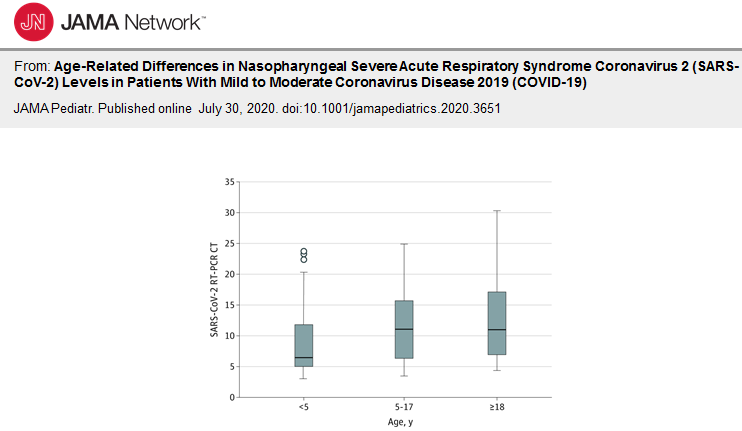
SIGNIFICANCE OF PLANT-BASED DIETS FOR CONTROL OF BLOOD PRESSURE
August 17, 2020
Stress Management Vital for People Suffering Through Type 2 Diabetes
September 14, 2020Researchers Suspects children to be Potential Drivers of SARS-CoV-2 Spread in GENERAL Population
As safety of children was crucial, decision to close schools and daycare settings was implemented globally by the administrations during the SARS-CoV-2 (severe acute respiratory syndrome corona virus 2) pandemic.
Although children are also susceptible to get infected with SARS-CoV-2, they generally present with mild symptoms when compared with adults.
It is a known fact that children could cause spread of several respiratory and gastrointestinal illnesses in the communities, data on children as sources of SARS-CoV-2 spread are sparse.
Due to school closures early in pandemic, large-scale investigations were not conducted to find if children can be a source of SARS-CoV-2 community transmission.
To develop clear understanding of transmission potential of SARS-CoV-2 among children is of critical importance for public health systems in order to provide guidance for public health measures, as administrations struggle worldwide to re-open schools.
Recently, researchers at a medical facility in Chicago conducted studies and performed SARS-CoV-2 reverse transcriptase polymerase chain reaction test (RT-PCR) on nasopharyngeal swabs specimens that were collected from individuals with symptoms suggestive of COVID-19 (corona virus disease) compatible illness.
[ RT-PCR test is a reliable and most commonly performed test to diagnose COVID-19. It is performed usually through collecting nasopharyngeal swab specimens. It is a very accurate test as it takes genetic material from the virus present in the specimens, target specific gene segment that only the virus has and replicates those segments, so that they can be detected and measured.]
For the studies, PCR amplification cycle threshold values i.e. CT values [CT = It is the number of replication cycle required to produce a florescent signal] were recorded. Lower CT value represents high viral loads (indicating presence of higher amount of viral nucleic acid or viral genetic material), thus suggestive of positive PCR.
Researchers Selected 145 patients with mild to moderate illness who tested positive for SARS-CoV-2, in order to conduct the studies. As the studies progressed, they included the first sample tested for patients with multiple samples tested afterwards.
During the studies researchers compared three groups of participants:
Young children, younger than 5 years of age (46 participants)
Older children aged 5 to 17 years (51 participants)
Adults aged 18 to 65 years (48 participants)
Through the studies researchers observed that young children have equivalent or more viral nucleic acid (viral genetic material) in their upper respiratory tract when compared with older children and adults.
They found that children younger than 5 years had significantly lower CT values when compared with older children aged 5 to 17 years and adults 18 years and older. There was approximately a 10- fold to 100-fold greater amount of SARS-CoV-2 in the upper respiratory tract of young children.
However, CT values were similar between older children aged between 5 to 17 years and adults 18 years and older.
Scientists claims that their studies are limited to the detection of viral nucleic acid (viral genetic material), rather than infectious virus or viable virus as RT-PCR test can only detect presence of viral genetic material (viral particles) rather than viable virus.
However scientists also claims that, SARS-CoV-2 pediatrics studies (studies conducted among children), reported a correlation between higher nucleic acids levels and ability to culture infectious virus.
Researchers suggests that as the studies have shown that children younger than 5 years with mild to moderate COVID-19 have high amounts of SARS-CoV-2 viral RNA (viral genetic material) in their nasopharynx when compared with older children and adults. Thus, young children can potentially be important drivers of SARS-CoV-2 spread in general population, as has been demonstrated with respiratory synictial virus (a virus that causes respiratory illness), where children with high viral loads are more likely to transmit the disease.
As public health restrictions are eased, behavioral habits of young children and close quarters in schools and daycare settings raise concerns for SARS-CoV-2 amplification in this population.
Researchers also suggest that this population group will be important for targeting immunization efforts as SARS-CoV-2 vaccine becomes available.

REFERENCE:
Title of the article: Age-Related Differences in Nasopharyngeal Severe Acute Respiratory Syndrome Coronavirus 2 (SARS-CoV-2) Levels in Patients with Mild to Moderate Coronavirus Disease 2019 (COVID-19)
Authors:
Taylor Heald-Sargent, MD, PhD
William J.Muller, MD, PhD
Xiaotian Zheng, MD, PhD
https://jamanetwork.com/journals/jamapediatrics/fullarticle/2768952






